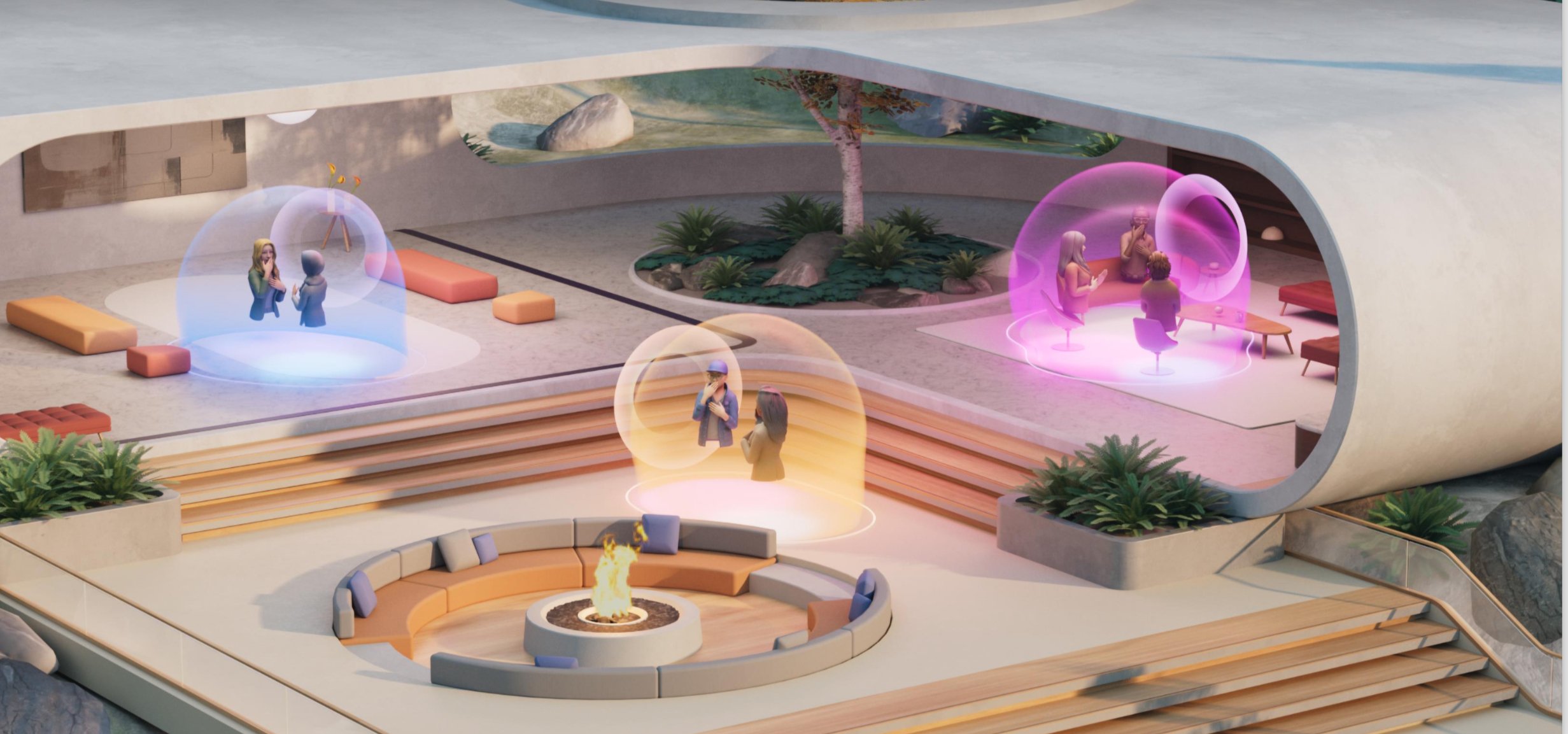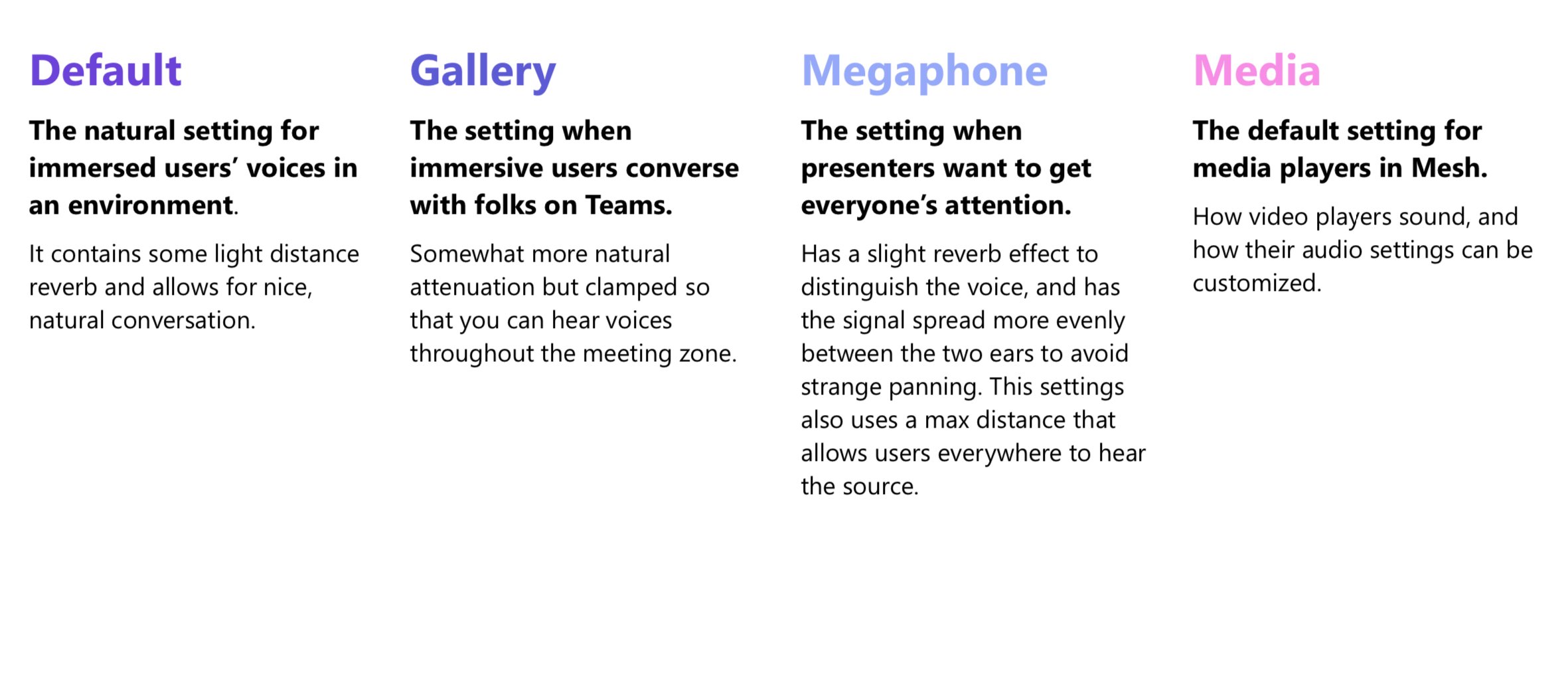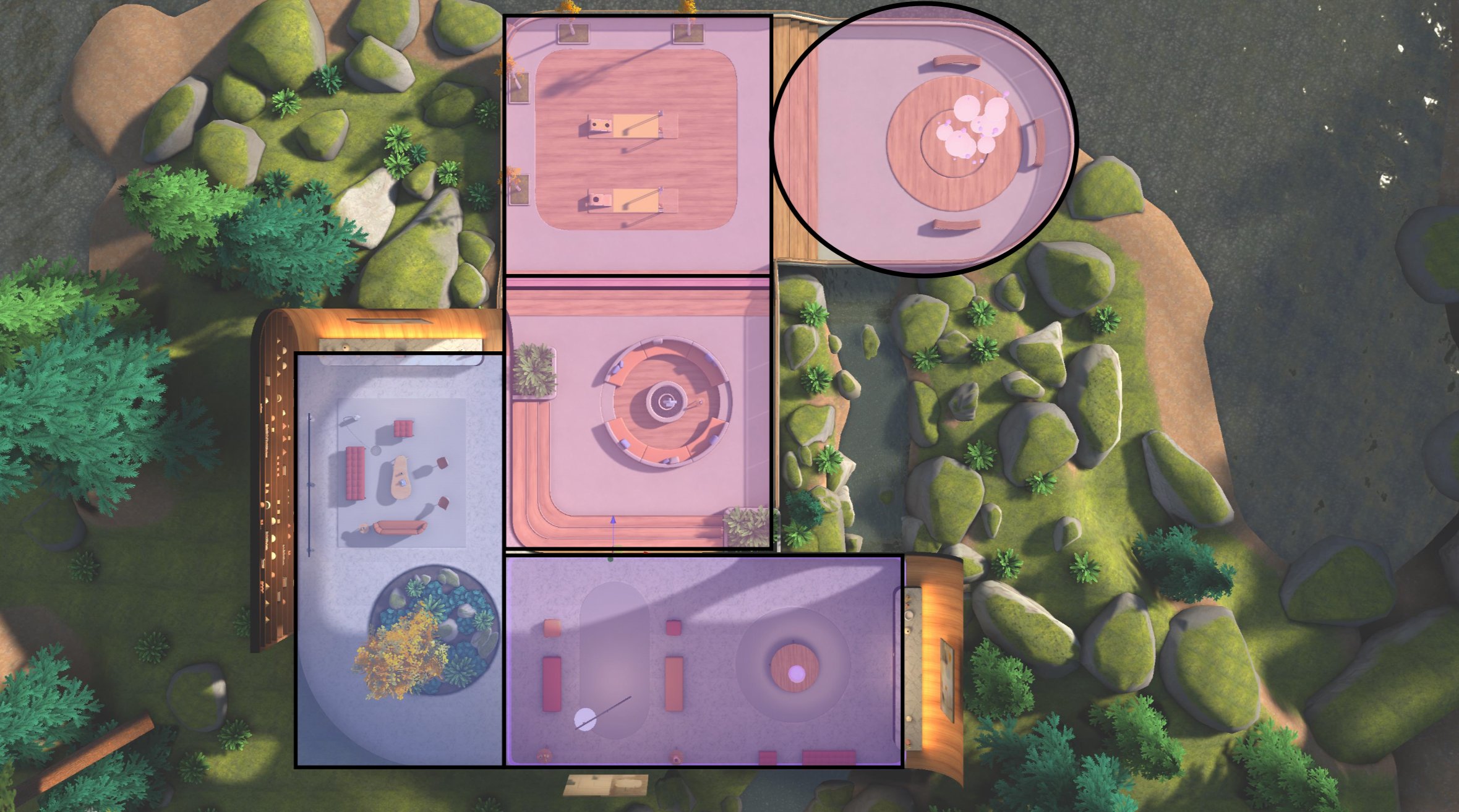
Spatial audio helps immersion feel real and enables private conversations.
Microsoft Mesh for Teams
Shipped a spatial audio platform for 0-1 product launch in Spring 2024
Objective
Define the Spatial Audio go-to-market strategy for VR headsets, PC desktops, and the Teams platform, enabling interoperability between 3D and 2D audio platforms.
Key Activities
Led cross-discipline workshops to define the Northstar experience
Collaboratively designed product vision with audio designers and engineering
Guided iterative builds with customer feedback
Ensured product cohesion and design quality through feature team collaborations
Facilitated team alignment and leadership approvals around complex technical constraints
Outcomes
We launched a foundational MVP audio experience that was easy to build upon and customize with developer tools.
Clear scenarios and requirements supported smooth collaboration with other teams on overlapping feature sets.
VR participants trust they won’t interrupt each other while having simultaneous conversations in the same virtual space.
Bridging 2D and 3D audio platforms was another step towards a BYO device experience.
To enable Teams and Mesh meeting participants to interact with each other, we built meeting zones in the virtual space where the 2D and 3D audio platforms could be mixed.
We solved technical and experiential challenges through daily product reviews and sprint iterations. Cross-team collaboration early on built trust and camaraderie across product, engineering and design through a complex technical integration project.
Insights to Ideation
I leveraged existing research to create customer profiles to kickstart a brainstorm session.
The team defined profile-specific experience goals and jobs to be done for immersive conversations.
Aligning the team around customer needs equipped everyone to advocate for the end user throughout ongoing feature discussions.
I led the team to sort the JTBD on a 2X2 matrix using private:public and spatial proximity:interface controls as the variables.
We aligned on what needs could be met with Spatial Audio alone, and which may require visual cues and/or interface controls. The end user’s need for intuitively private conversations was a key driver in feature discussions.
This was the foundation for the Spatial Audio feature stack, and gave audio engineers foresight to develop innovative audio features.
Defining the Experience
We collaboratively mapped key moments across the customer journey and defined the golden path experience, stacked the features needed for each moment.
I used this type of map to communicate Spatial Audio needs with other feature teams that owned overlapping product areas.
We defined our design principles based on Spatial Audio best practices and customer needs.
We prioritized Spatial Audio settings for the MVP so the audio team could build out the natural sound environment first.
Concurrently, 3D artists and designers developed visual cues and audio controls to be ready to address pre-launch customer feedback.
To build a robust platform, we defined and built voice setting collections that could support intuitive communication for all kinds of social interactions.
These tools were used to both internally to build out Mesh for Teams environments, and externally to build out custom worlds by our developer communities.
Along with interactive, live prototypes, we used map overlays to define audio zones to explain communication behavior in design reviews. These maps clarified design intents and expedited decision-making.




